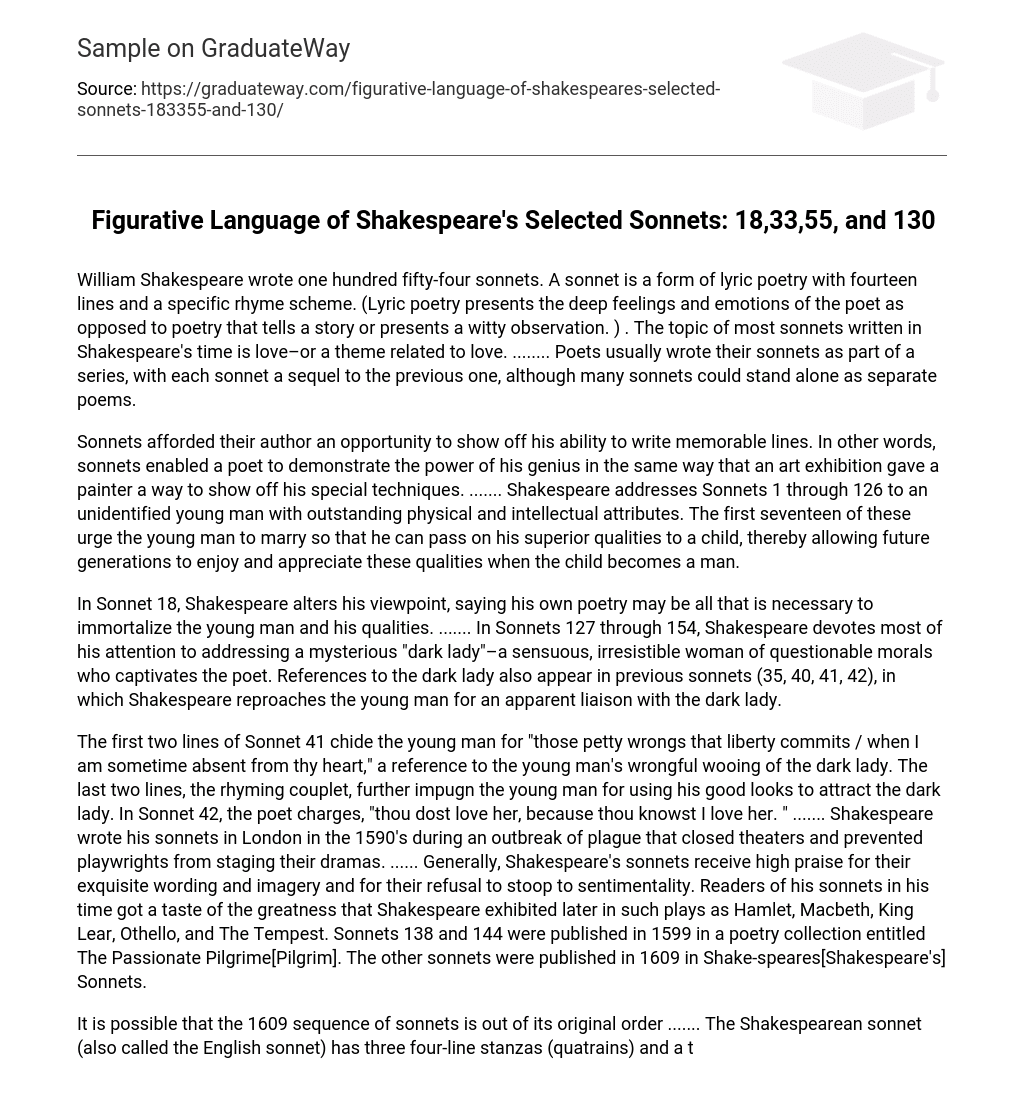William Shakespeare composed a total of 154 sonnets, which are a type of lyric poetry containing fourteen lines and following a specific rhyme pattern. Lyric poetry focuses on the personal emotions and feelings of the poet, distinguishing it from narrative or observational verse. The majority of sonnets written during Shakespeare’s era revolve around the theme of love or related subjects. These sonnets were commonly created as a sequence, with each one building upon the previous, although many sonnets can also function as independent poems.
Sonnets allowed their author to showcase their skill in creating unforgettable lines. In essence, sonnets provided a platform for poets to exhibit the brilliance of their talent, much like how an art exhibition allows painters to display their unique techniques. Shakespeare’s Sonnets 1 through 126 are directed towards an unnamed young man who possesses exceptional physical and intellectual qualities. The initial seventeen sonnets encourage this young man to marry in order to pass on his superior attributes to a child, ensuring that future generations can relish and value these qualities as the child grows into adulthood.
In Sonnet 18, Shakespeare changes his perspective, suggesting that his own poetry could be enough to immortalize the young man and his attributes. Additionally, in Sonnets 127 through 154, Shakespeare focuses heavily on the enigmatic “dark lady” – a seductive and morally ambiguous woman who captivates the poet. Previously, references to the dark lady can be found in sonnets 35, 40, 41, and 42, where Shakespeare reproaches the young man for his apparent connection with her.
The poet in Sonnet 41 criticizes the young man for being unfaithful when the poet’s affection is absent, particularly for pursuing the dark lady. In the closing lines, the young man is scolded for using his attractiveness to seduce the dark lady. Sonnet 42 accuses him of loving her because he knows that the poet loves her too. These sonnets were written by Shakespeare during London in the 1590’s, a time when theaters closed due to a plague outbreak. Despite this setback, Shakespeare’s sonnets are highly esteemed for their beautiful language and imagery and their avoidance of sentimentality. Readers who enjoyed these sonnets caught a glimpse of Shakespeare’s greatness, which would later be showcased in plays like Hamlet, Macbeth, King Lear, Othello, and The Tempest. Sonnets 138 and 144 were included in The Passionate Pilgrime poetry collection in 1599 while the rest were published in Shake-speares Sonnets in 1609.
The original order of the 1609 sequence of sonnets may potentially have flaws, but Shakespeare follows a consistent structure throughout his sonnets. The Shakespearean sonnet, also known as the English sonnet, consists of three quatrains and a couplet. In each quatrain, the first and third lines rhyme with each other, as do the second and fourth lines. Additionally, every poem concludes with a couplet where both lines rhyme. The only exception to this pattern is Sonnet 145. It is important to note that all of Shakespeare’s sonnets, except for Sonnet 145, are written in iambic pentameter. This means that there are five pairs of syllables per line, with emphasis on alternate pairs.





